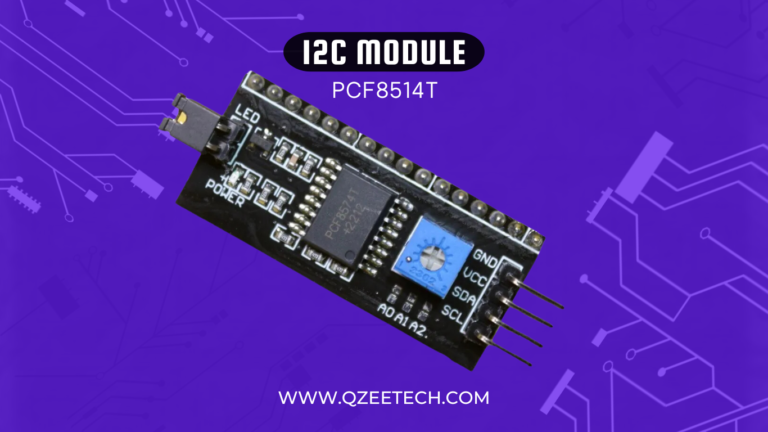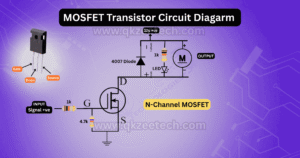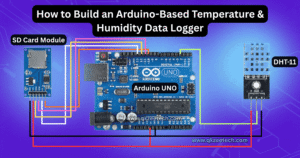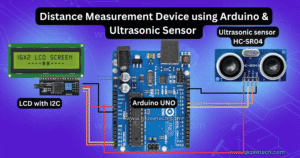Overview of the PCF8514T I2C/IIC Module for LCD Displays Serial Interface Adapter
Introduction to the PCF8514T I2C/IIC Module
In the world of electronics, efficient data communication and reduced pin usage are essential for projects requiring multiple components to communicate smoothly. The PCF8514T I2C/IIC Module for LCD displays offers a simple and highly efficient way to connect LCDs to microcontrollers with minimal wiring, using the widely adopted I2C protocol. This article covers everything you need to know about the PCF8514T I2C/IIC module, from its features to practical uses and where to find it at the best price in Lahore, Pakistan.
Why Use PCF8514T I2C/IIC for LCD Displays?
Reducing Pin Usage
The PCF8514T allows you to control an LCD display with only two wires (data and clock lines), as opposed to parallel communication, which requires several GPIO pins. This is incredibly useful when working on projects with limited pins, such as the Arduino Uno or the ESP8266.
Improved Data Transfer
By using I2C communication, the PCF8514T enables a more streamlined and organized data transfer, reducing noise and enhancing the efficiency of data flow between components.
Features of the PCF8514T Module
Low Power Consumption
One of the PCF8514T’s standout features is its low power consumption, making it ideal for battery-operated projects or energy-conscious applications.
Compatibility with Various LCD Sizes
The versatile module works seamlessly with 16×2, 20×4, and other LCD sizes, allowing project flexibility.
Easy Integration with Microcontrollers
The I2C protocol’s simplicity makes it easy to set up with popular microcontrollers, such as Arduino, Raspberry Pi, and ESP32.
Specifications of the PCF8514T Module
- Operating Voltage: 5V DC
- Current Rating: Minimal, optimized for low power
- Communication Protocol: I2C, with an address that can be configured based on project needs
- Compatibility: Works with a variety of LCD displays
How Does the I2C Interface Work in PCF8514T?
Basics of I2C Communication
The I2C protocol uses two lines,
SDA (Serial Data)
SCL (Serial Clock)
to send data between devices. Each device on the I2C bus has a unique address, allowing communication between multiple devices with minimal wiring.
Data and Clocklines in Action
SDA carries the actual data, while SCL provides the clock signal. This makes I2C a synchronous communication protocol, meaning data transfer is in sync with the clock pulse, reducing errors.
Comparing PCF8514T with Other LCD Modules
Advantages of PCF8514T Over SPI and Parallel Modules
I2C uses fewer pins than SPI and parallel communication, offering greater simplicity and compatibility with microcontrollers with limited pins.
Price and Accessibility in Lahore, Pakistan
Compared to other modules, the PCF8514T is widely available on Hall Road in Lahore and various online stores at competitive prices.
Applications of PCF8514T I2C/IIC Module in DIY and Industrial Projects
For Makers and Hobbyists
This module is popular among makers for building DIY Arduino and Raspberry Pi projects, like temperature monitors, clocks, and even robotic controls.
Usage in Industrial Automation
In the industrial field, this module is used for data displays, monitoring devices, and control panels due to its reliable communication and flexibility.
Where to Buy the PCF8514T I2C/IIC Module at the Best Price in Lahore
To get the best deals, QKZee Technologies Hall Road in Lahore is a hotspot for electronic components. Online stores also offer competitive prices, and bulk purchases may further reduce the cost.
Setting Up the PCF8514T I2C Module with an LCD Display
Required Components and Wiring
To set up the PCF8514T, you’ll need:
- An LCD display (e.g., 20×4 or 16×2)
- PCF8514T I2C module
- Connecting wires
- Microcontroller (e.g., Arduino or Raspberry Pi)
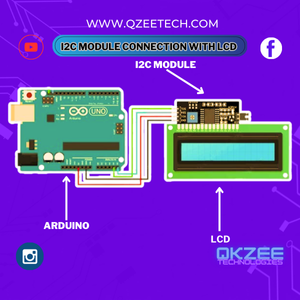
Coding for Arduino and Raspberry Pi
Using the Arduino IDE, you can load the LiquidCrystal_I2C library and follow a simple code snippet to display data.
Programming the PCF8514T for LCD Displays
Simple Display Code for I2C Module for Beginners
With a few lines of code, you can display simple text on your LCD. Here’s an example of initializing and setting up a message on your LCD screen:
#include <Wire.h>
#include <LiquidCrystal_I2C.h>
LiquidCrystal_I2C lcd(0x27, 20, 4);
void setup() {
lcd.init();
lcd.backlight();
lcd.setCursor(0, 0);
lcd.print("Hello, World!");
}
void loop() {
}
Advanced Display Functions and Customization
Customize the display by adding scrolling text, custom characters, or even animations to enhance your project’s interactivity.
Benefits of Using I2C LCD Modules
Fewer Wiring Complexities
I2C reduces the complexity of wiring multiple components, making it ideal for compact projects.
Enhanced Data Speed
Since I2C is a synchronous protocol, it offers higher transfer rates compared to asynchronous communication methods, making data flow smoother.
Troubleshooting Common PCF8514T Issues
Display Not Working
Check if the wiring is correct and that the module is receiving the required power. Adjust the contrast if needed.
Incorrect Character Display
Ensure that the module’s address is correct in the code, as an incorrect address can cause display errors.
Additional Tips for Working with PCF8514T
Adjusting the Contrast
Use the potentiometer on the module to adjust the LCD contrast for better visibility.
Optimizing Power Usage
If running on a limited power source, consider reducing the display brightness or backlight.
Where to Buy Your I2C Module for LCD
Looking for affordable components for this Arduino project? Check out QKZee Technologies, an online shop in Lahore, Pakistan, offering the best components for students and DIY projects. Whether you’re looking for sensors, modules, or other electronics at a cheap price, they’ve got it all. Visit them at QKZeeTech.
Conclusion: Is PCF8514T Worth It?
The PCF8514T I2C/IIC Module for LCD Displays is an excellent investment for hobbyists and professionals looking for efficient and compact LCD interfacing solutions. Its ability to reduce pin usage and enhance data transfer makes it ideal for a variety of applications, from DIY projects to industrial automation.
How do I connect PCF8514T to an Arduino?
Simply connect the SDA and SCL pins of the PCF8514T to the corresponding pins on the Arduino, usually A4 and A5 on the Arduino Uno.
Can PCF8514T work with all LCD displays?
It’s compatible with most standard character LCDs, including 16x2 and 20x4 displays.
Where is the best place to buy PCF8514T in Lahore?
Hall Road in Lahore offers the best prices, with online stores providing additional options.
What is the main difference between I2C and SPI?
I2C uses two lines (SDA, SCL) and allows multiple devices on the same bus, while SPI requires more pins and offers higher speeds.
How can I troubleshoot issues with my I2C module?
Check wiring, confirm the correct address, and adjust the contrast as needed.

